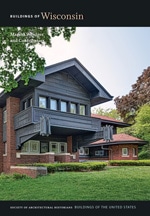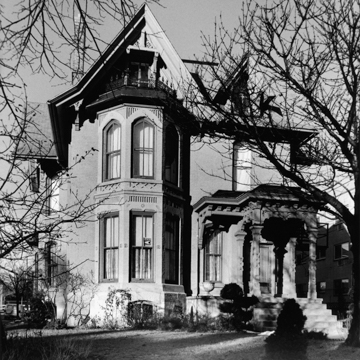The district surrounding the Walker House, almost a mile west of downtown, is a classic example of a streetcar suburb or, more accurately, a horse-car suburb. The west-side neighborhood opened to development with the construction of the Wells Street horse-car line, which enabled wealthier Milwaukeeans, like Harry Walker, paymaster for the Chicago, Milwaukee and St. Paul Railroad, to move farther out but still reach workplaces downtown. The High Victorian Gothic house lavishly illustrates the picturesque character of the style from its asymmetry, varieties of window types, and such lively features as an elaborate wooden porch, iron roof cresting, and elegant scroll-sawn ornament and turned trusswork on the peaks of the gables. A steeply pitched, multigabled roof has exceptionally deep overhangs and flared eaves, showing why architect Douglas was widely known for his complex rooflines.
You are here
Harry and Chastina Walker House
If SAH Archipedia has been useful to you, please consider supporting it.
SAH Archipedia tells the story of the United States through its buildings, landscapes, and cities. This freely available resource empowers the public with authoritative knowledge that deepens their understanding and appreciation of the built environment. But the Society of Architectural Historians, which created SAH Archipedia with University of Virginia Press, needs your support to maintain the high-caliber research, writing, photography, cartography, editing, design, and programming that make SAH Archipedia a trusted online resource available to all who value the history of place, heritage tourism, and learning.











